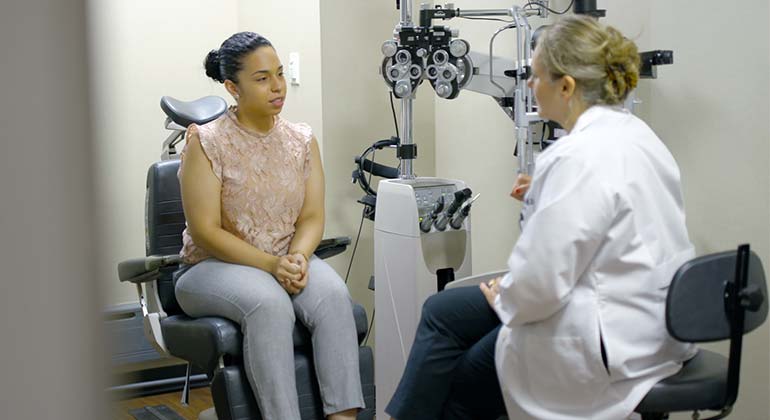Locate a Neurologist in Andalusia: Specialized Clinics and Care Providers
Locate a Neurologist in Andalusia: Specialized Clinics and Care Providers
Blog Article
The Benefits And Drawbacks of Different Refractive Surgical Procedures for Enhanced Eyecare

LASIK Surgical Treatment
LASIK surgery is a typically performed refractive procedure that intends to fix vision issues such as farsightedness, astigmatism, and nearsightedness. This surgical strategy has actually obtained appeal because of its effectiveness in supplying patients with clearer vision and decreasing their dependency on glasses or get in touch with lenses. During the treatment, a thin flap is created on the cornea, and a laser is used to improve the underlying cells, fixing the refractive error. The flap is then rearranged, permitting fast healing and minimal discomfort for the individual.
One of the main benefits of LASIK surgical treatment is the fast improvement in vision experienced by many individuals. It is necessary for individuals taking into consideration LASIK surgical treatment to undertake a thorough examination by an eye care professional to figure out if they are suitable candidates for the treatment.
PRK Procedure
The PRK procedure, additionally known as Photorefractive Keratectomy, is a sort of refractive surgical procedure that aims to correct vision issues similar to LASIK surgical treatment. Unlike LASIK, which involves producing a flap in the cornea, PRK works with the surface area layer of the cornea. Throughout the PRK procedure, the outer layer of the cornea, called the epithelium, is eliminated to allow improving of the underlying corneal cells with an excimer laser. This reshaping helps to deal with refractive errors such as farsightedness, astigmatism, and nearsightedness.
One of the benefits of PRK over LASIK is that it eliminates the danger of flap-related difficulties since no flap is produced during the surgical treatment. This can be beneficial for people with thin corneas or those associated with call sporting activities where eye trauma is a possibility. Nevertheless, the recovery time for PRK is typically much longer contrasted to LASIK, as the outer layer of the cornea requires time to regrow after the procedure. Despite the longer healing period, PRK can be a suitable alternative for individuals looking for vision modification surgical procedure.
SMILE Surgery
A sophisticated refractive surgical treatment method gaining popularity in the field of ophthalmology is SMILE Surgery. Small Laceration Lenticule Extraction (SMILE) is a minimally invasive treatment that corrects vision by reshaping the cornea making use of a femtosecond laser. Unlike typical LASIK surgical procedure, SMILE Surgery entails producing a small incision in the cornea to extract a lenticule, which results in much less disruption to the corneal structure and potentially faster recovery times.
Among the main advantages of SMILE Surgical treatment is its capacity to treat myopia (nearsightedness) and astigmatism with high precision, causing superb aesthetic results for individuals. The minimally intrusive nature of the treatment also decreases the risk of issues such as dry eye syndrome, making it a favorable choice investigate this site for individuals looking for refractive surgery.

LASEK Strategy
Having checked out the benefits and considerations of SMILE Surgical procedure, useful site an additional noteworthy refractive surgery technique worth examining is the LASEK Method. LASEK, which represents Laser-Assisted Subepithelial Keratectomy, is a kind of laser eye surgical treatment that intends to deal with refractive mistakes such as nearsightedness (nearsightedness), hyperopia (farsightedness), and astigmatism.
Unlike LASIK, LASEK does not entail producing a corneal flap. Instead, throughout a LASEK procedure, the surgeon uses a watered down alcohol solution to loosen up the slim external layer of the cornea, understood as the epithelium.
One of the primary benefits of LASEK is that it can be suitable for people with thin corneas that may not be excellent prospects for LASIK. Additionally, LASEK normally causes very little post-operative discomfort and a quicker healing time compared to PRK. The aesthetic healing procedure with LASEK may be a little longer than with LASIK.
Implantable Contact Lenses
Implantable Contact Lenses provide a long-term vision adjustment option for individuals looking for a choice to standard why not find out more get in touch with lenses or glasses. These lenses, additionally called phakic intraocular lenses, are operatively placed right into the eye to remedy refractive errors such as myopia (nearsightedness), hyperopia (farsightedness), and astigmatism. eye doctors in andalusia. Unlike traditional contact lenses that rest on the surface of the eye, implantable call lenses work within the eye itself, supplying clear vision without the requirement for daily upkeep or elimination
One of the key benefits of implantable contact lenses is their permanence. When inserted, they can stay in the eye indefinitely, supplying steady and constant vision adjustment. Furthermore, these lenses can be an excellent choice for individuals that are not good prospects for laser eye surgical procedure or who like a reversible vision improvement procedure.
Nonetheless, implantable contact lenses do lug some dangers, consisting of the potential for cataracts or increased eye pressure. It is critical for people considering this option to seek advice from an eye treatment specialist to figure out if implantable contact lenses are the right option for their particular requirements and eye health.
Final Thought
In verdict, each type of refractive surgical treatment has its own benefits and downsides. LASIK surgical treatment is prominent for its fast healing time, while PRK procedure may be ideal for people with thin corneas.

Generally, SMILE Surgical procedure provides an appealing alternative for individuals looking to enhance their vision through refractive surgical treatment.
Report this page